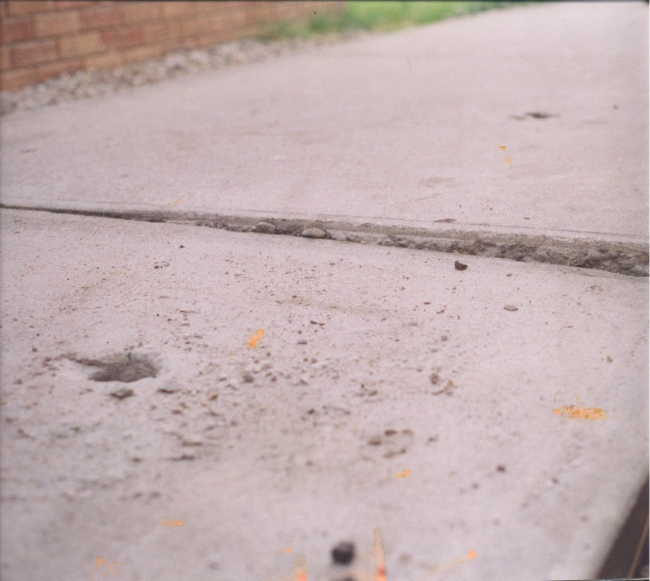There was a time when the only remedy for sinking sidewalks, patios, steps, or uneven foundations was to tear out the old pavement slab and pour a new one, and spend a great deal of time and money in the process.  Today, a less intensive alternative–known as mud-jacking–is possible. Mud-jacking, also called concrete leveling, pressure grouting or slab-jacking, is a process where a person pumps slurry beneath a sunken concrete slab in order to raise it back into place. Then your uneven concrete or pavement slab is level again and no longer unsightly, a nuisance, or most-importantly, a safety-hazard.
Today, a less intensive alternative–known as mud-jacking–is possible. Mud-jacking, also called concrete leveling, pressure grouting or slab-jacking, is a process where a person pumps slurry beneath a sunken concrete slab in order to raise it back into place. Then your uneven concrete or pavement slab is level again and no longer unsightly, a nuisance, or most-importantly, a safety-hazard.
Why did my concrete slab sink?
- The original concrete may have been installed on dirt that wasn’t compacted sufficiently.
- The soil underneath may have eroded.
- Some soil simply settles naturally over the course of many years.
It’s important to address sunken concrete.
Regardless of the cause, sunken concrete can lead to many structural defects, including failed retaining walls, foundation settling, uneven junctions of concrete, sunken sidewalks, uneven concrete pads, cracked foundations, and bowed basement walls. If left uncorrected, these defects can lead to unwanted water runoff and major structural problems.
The mud-jacking process.

While mud-jacking uneven pavement is not a complicated procedure, it should be performed only by a trained professional, as amateur workmanship can cause even more extensive damage. Prior to a mud-jacking procedure, drain pipes, sewers, and utilities must be located and avoided. The area around your uneven pavement must also be evaluated as to whether it can survive the mud-jacking process.
Some advantages of mudjacking over re-pouring cement include:
- Efficiency. Mud-jacking requires less equipment and fewer workers.
Adjacent plants and landscaping are disturbed less, as are neighbors, tenants, and passersby by from the loud noise, dust, and cumbersome equipment. - Price. Mud-jacking a slab or uneven pavement can cost roughly half as much as concrete slab replacement because there is little need for new cement or the removal of old concrete. The overall cost is based on the area of uneven concrete that must be lifted, which may be as little as $5 per foot. For example, a 5×4-foot job, it can cost just $60 (the mudjacker may charge more if the area is in a hard-to-reach location).
- Speed. Mud-jacking uneven pavement typically takes a few hours, where certain concrete pours may take days for removal of old uneven pavement, surface leveling, pouring new cement, and waiting for it to set.
- Environmentally friendly. Mud-jacking uneven pavement makes use of perfectly good concrete, which would otherwise be sent to a landfill.
There are some limitations to mud-jacking uneven concrete.
- The concrete surface is spalling or otherwise damaged. The mud-jacking process might further damage the surface of the uneven pavement, which will still be defective even after it’s raised back into place.
- The concrete has risen, caused by expansive soil. The only solution for uneven pavement where the pavement is pushing upwards is to re-pour the cement.
- The cause of the settling and uneven pavement is not addressed. If the soil has settled due to some external factor, the problem must be fixed or the soil will sink again in the future. For instance, a gutter downspout that drains onto a concrete edge must be corrected in order to avoid the need for future repair.
- The underlying soil is swampy.
- There is a sinkhole beneath the concrete.
Bob Beisbier, owner of BK Home Inspection, is a Certified Master Home Inspector who has been providing professional and thorough home inspections in southeast Wisconsin for over 12 years. Bob is Infrared certified, DILHR Certified, and provides Home Energy Tune-ups, Environmental Data Reports, Pre-sale Home Inspections and Pre-offer Home Inspections.






